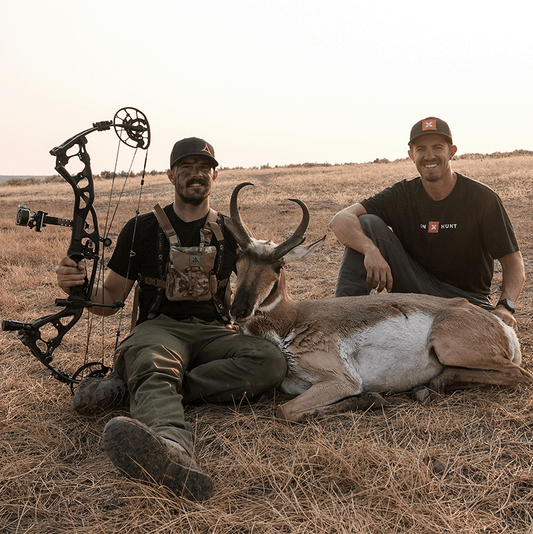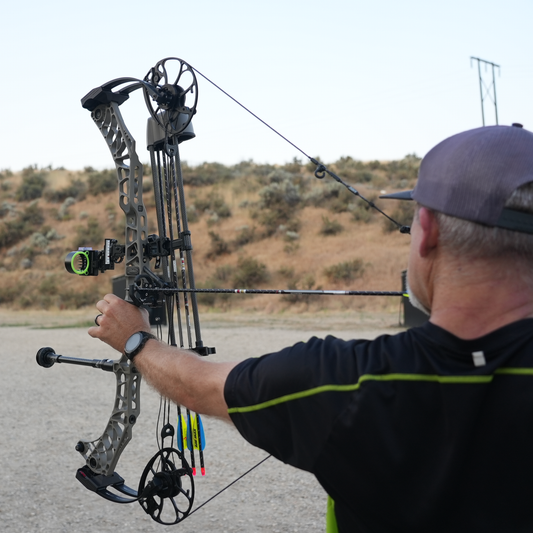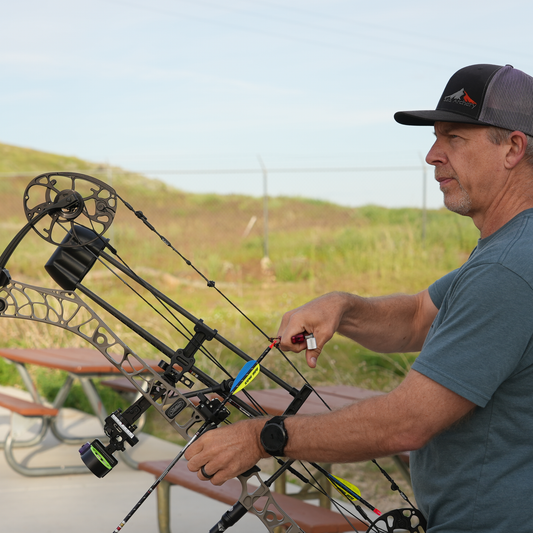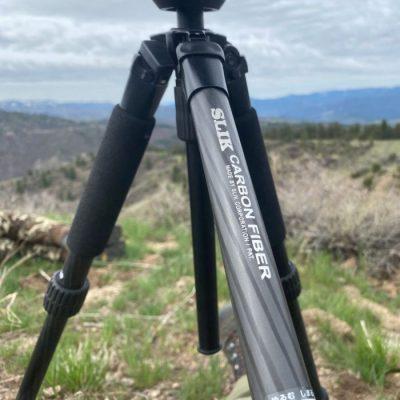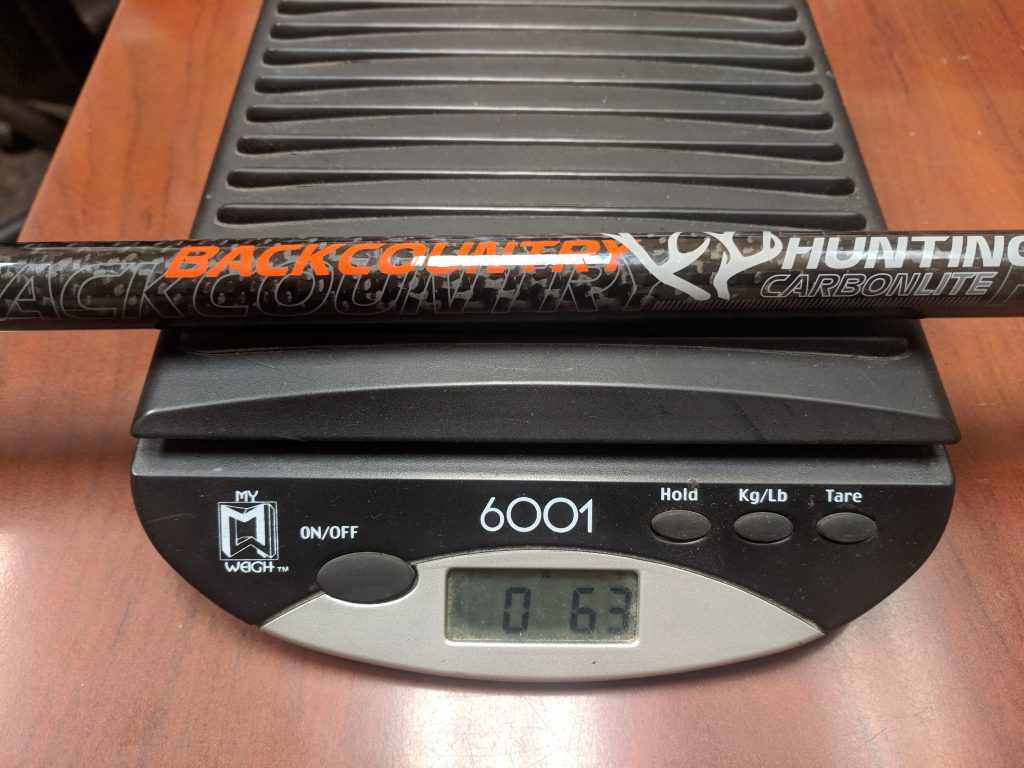S&S Archery CL Backcountry Trekking Pole Review

A note from the owner on why we developed our own backcountry trekking poles-
At S&S Archery we have been using trekking poles for probably the last 5 years or so on all of our backcountry trips. We, just like a lot of others, used to make fun of the “old” guys using trekking poles and thought they weren’t something we needed. But all it took for us and the many others who have tried them, is one heavy pack out in some rough / rugged country and you instantly understand their value as a critical item to have in your pack. We’ll guarantee they will become a must have on your gear list. Like a lot of products out on the market that we as hunters use they aren’t designed with a backcountry hunter in mind. They are designed for the average backpacker hiking into a lake a few miles from the trailhead with a 30lb pack. In our search for the best trekking pole for our needs we found there was a hole missing. It seems the choices were either ultralight carbon poles that weren’t tough enough for the demands we need, i.e, packing out 100+ lb loads out of rugged country, or they were cheaper heavy aluminum ones or even ones with cheaper locking mechanisms that wouldn’t hold up to the heavy weights. We have all gone through multiple pairs of trekking poles during the last 5 years which lead us to set out and create our own trekking pole.
The goal was to produce a set in the 14-15oz range made out of Carbon to be as light as possible but still be extremely strong and with tough locking mechanisms to handle the heavy loads. We also wanted a comfortable grip / handle and a wide comfy wrist strap for those long pack outs. In the end we couldn’t be more excited with the product we developed. The total weight came in at a scant 12.6 oz for the set! We tested, abused and used these trekking poles for 1 full year. They have been on two Exo Mountain Gear Death hikes, in the brooks range of Alaska, the Colorado backcountry, the Idaho backcountry and many places in between. We have seen zero issues in all that testing; not a broken strap, not a broken tip, nothing! We are extremely excited to get these out there in our customers hands and see the pics of them being put to use! We hope you enjoy them as much as we do. -Steve SpeckBefore we brought this product to market we wanted to be 100% confident they were going to hold up for the long haul. We tested the exact poles we are selling for 1 full year to make sure they were going to perform. Here's just a few pics of us using the poles over the last year. You can buy them with confidence!
 Lenny's river crossing in Alaska loaded with Caribou meat (Fall of 2018)
Lenny's river crossing in Alaska loaded with Caribou meat (Fall of 2018) Lenny packing out an Idaho Bull. Pack load was 127lbs! (Fall of 2018)
Lenny packing out an Idaho Bull. Pack load was 127lbs! (Fall of 2018) Tyler Boschma crossing one of the many streams on the 2018 Death Hike
Tyler Boschma crossing one of the many streams on the 2018 Death HikeDetails. Details.
Carbon Poles
Why did we choose carbon? Simple. Weight and strength. The weight to strength ratio in carbon is second to none. Carbon also tends to absorb vibrations that would otherwise be transferred to your wrists and arms.Twist Lock
For backpack hunters the twist locks were a no brainer. Quick and easy to deploy, no tools needed to adjust, and slides in and out of your backpack’s pocket easily. Not to mention the amazing adjustability a twist lock offers.Foam grips
Our EVA Foam is soft and provides a good measure of shock absorption. Foam will also aid in wicking moisture which is likely to happen on those heavy packouts. But more importantly for the backcountry hunter, the grips are “all day” comfortable.Wrist straps
Our wrist straps are simple. Lightweight, wide, and very comfortable. Yet they are strong enough to last.Weight
Being backcountry or backpack hunters, weight is always a priority when considering gear. Our goal was not to build the lightest trekking poles, but considering the strength and build quality, we are very happy with the end result. 12.6oz for the pair is well below our target of “under a pound”.Size
These trekking poles have to be very adjustable. We don't just use these poles for “trekking”. We also use them for pitching tents and tarps. We use them to prop up our packs, aiming stakes, you name it. Measured lengths go from 40” to 54”, and compressed down are only 26” long.Testify
After over a year of tough testing in many different environments, we think these trekking poles are perfect for the serious backcountry hunter. But don’t take our word, here are some of the guys who were lucky enough to test these trekking poles over the last year: Boise State Defensive lineman Sam McCaskill summits Mt. Borah (Summer 2018)
Boise State Defensive lineman Sam McCaskill summits Mt. Borah (Summer 2018)“So a huge plus that I noticed on both of my big hikes was just how comfortable the handles were. I had some REI ones that should have had nice Cork grips that didn’t heat up but they always did. The carbon is obviously very light I love that! And they are super tough honestly they should have broke when I ran in the last 7 Miles I leaned on them pretty hard a couple times. Travis who was running with me bent up his poles bad and I’m pretty sure he’ll be one of your first customers now.”
-Tyler Boschma
“In my opinion they're great poles and tough to beat. Super light weight while very strong and durable. I used them pretty extensively over the last year and had no issues whatsoever.”
-Rick Palmer
“Coming from stout Leki poles with flick-locks, I was skeptical about these poles at first. These were waaaay lighter and had the twist-locks, which had failed me on other brands in the past. After putting them to the test and understanding more about the design of these specific twist locks, I now trust them. My Leki poles, while also solid, just feel too heavy now. I wouldn't think that the pole weight would make much of a difference, but you certainly feel the difference on longer hikes. I also like the low-profile wrist straps. I had to hold my Leki poles right or they would give me some abrasion and develop a hot spot in the hand, but that's a non-issue with the material used for these straps.”
-Mark Huelsing


